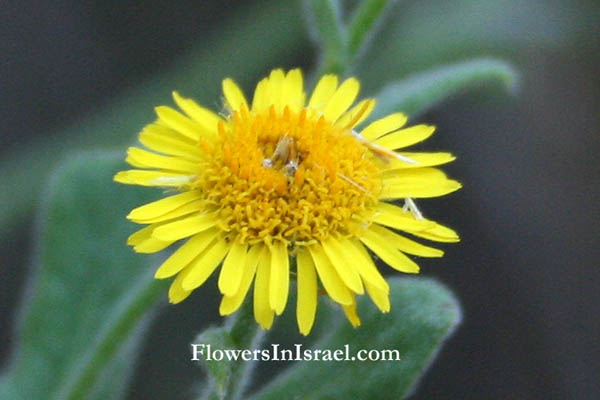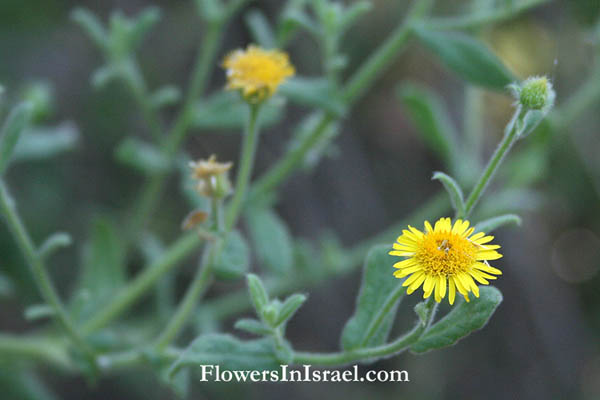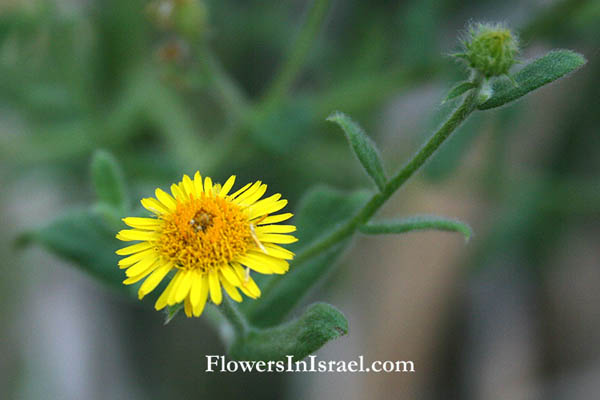Hebrew: פרעושית משלשלת, Arabic: رعراع أيوب
| Scientific name: | Pulicaria dysenterica (L.) Bernh. | |
| Common name: | Common fleabane | |
| Hebrew name: | פרעושית משלשלת | |
| Arabic name: | رعراع أيوب | |
| Family: | Compositae / Asteraceae, מורכבים |

|
| Life form: | Hemicryptophyte | |
| Leaves: | Alternate, entire | |
| Flowers: | Yellow | |
| Flowering Period: | June, July, August, September, October | |
| Habitat: | Humid habitats | |
| Distribution: | Mediterranean Woodlands and Shrublands, Semi-steppe shrublands, Deserts and extreme deserts | |
| Chorotype: | Euro-Siberian - Med - Irano-Turanian | |
| Summer shedding: | Perennating |

Derivation of the botanical name: Pulicaria, from the Latin pulex, "a flea", because it was said to drive away these pests. dysenterica, reputed to cause dysentery (intestinal disease). The Hebrew name: פרעושית, paroshit common flea bane (Pulicaria); formed from פרעוש with suffix ית, it, as a loan translation of Pulicaria from Latin pulex (= flea); so called because it is supposed to drive away fleas.

|